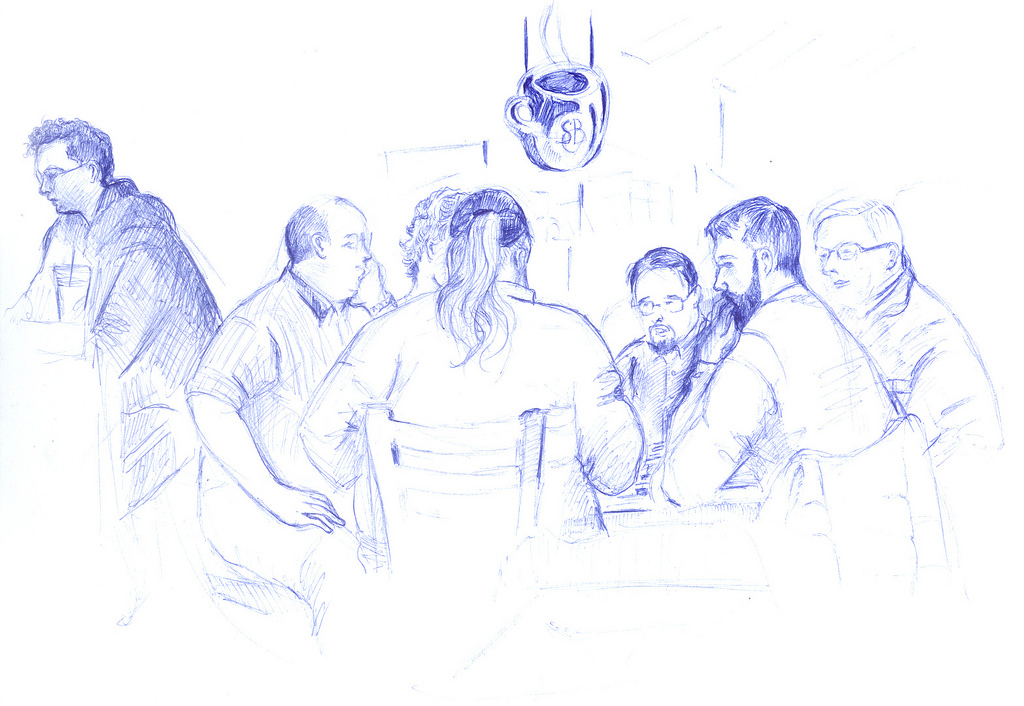 |
| The Fellowship is ready to move out. |
The board represents Middle Earth with sixteen areas such as Moria, Eregion, Gondor and Dagorlad The Shire and Mordor can hold four pieces, the Mountain spaces in the center can hold only one piece, while all others can hold two pieces. There are a few other geographical features which affect movement, including a tunnel through Moria which is great for the Fellowship, unless the Balrog stands guard.
Each player has nine pieces in the game, each with a unique power and each representing a member of the Fellowship or an individual or group working for Sauron, such as Saruman, the Witch King, Orcs, or Shelob. On your turn, you move one of your pieces one space forward (a couple pieces can move more than this or move in different directions). If there's an enemy piece in that space, you fight. Since you can't identify the enemy piece from the back, there is some risk involved in attacking. (If this sounds familiar, it is similar to the game Stratego, although Confrontation requires a LOT more thought and strategy.)
The powers of the characters are mostly thematic and add to the fun of the game. For example, Aragorn has flexibility of movement and can attack in any direction, not just forward. The Flying Nazgul can attack any single Fellowship piece anywhere on the board. Gimli automatically defeats the Orcs if he encounters them while Legolas automatically defeats the Flying Nazgul. Sam's strength is only 2, but if he's in a space with Frodo and they're attacked, he takes Frodo's place and his strength becomes 5.
Combat is a simple affair. Each piece has a combat value ranging from 0 to 9. Each player plays one of his hand cards to add to his value and the highest total value wins. The losing piece is removed from the board, while ties result in mutual annihilation. Each player also has Magic cards which can be played instead of a number card. These allow you to retreat, ignore the other player's number card, automatically kill both pieces, etc. The Dark player's cards have higher number values and the Fellowship player has an extra Magic card.
 |
| The Honored Dead await the next game. |
What's remarkable about the game is how well balanced it is. Despite having eighteen game pieces, each with a different power and different goals, the two sides are evenly matched. I've played dozens, maybe hundreds of times, and it all comes down to strategy. There is no luck involved.
To make sure we both had an equal chance, Carol and I agreed to play the best out of three games. For the first game, I randomly drew the Fellowship. While Frodo managed to move towards Mordor and avoided death, he moved a little too slowly and before he could evade the last of Sauron's minions, Carol moved three pieces, the Black Rider, the Flying Nazgul, and the Orcs, into the Shire for the victory.
We switched sides and Carol took over the Fellowship to nearly identical results. Frodo evaded capture but I was able to get the same three pieces, the Black Rider, the Flying Nazgul, and the Orcs, into the Shire. This was a bit unusual because games usually end with the death of Frodo or the dunking of the One Ring.
 |
| Mid-Game. |
For the final game, we randomly drew and I was once again the Fellowship, which had lost both previous games. I was more careful this time not to let Carol get any three pieces too near the Shire and combat took a huge toll on our pieces. But I gave as good as I got, resulting in my last four pieces being the four Hobbits which I thought was cool. Sam, Merry and Pippin gave their lives to save Frodo and soon it was the lone Hobbit against three Dark pieces. Carol did get one character into the Shire, but seeing that her remaining two pieces were too far away, I slipped Frodo past them to Mordor to destroy the One Ring.
 |
| Frodo in Mordor for the win. |
Coming up: For our twentieth game, we become pulp space heroes in Perry Rhodan: The Cosmic League.





















